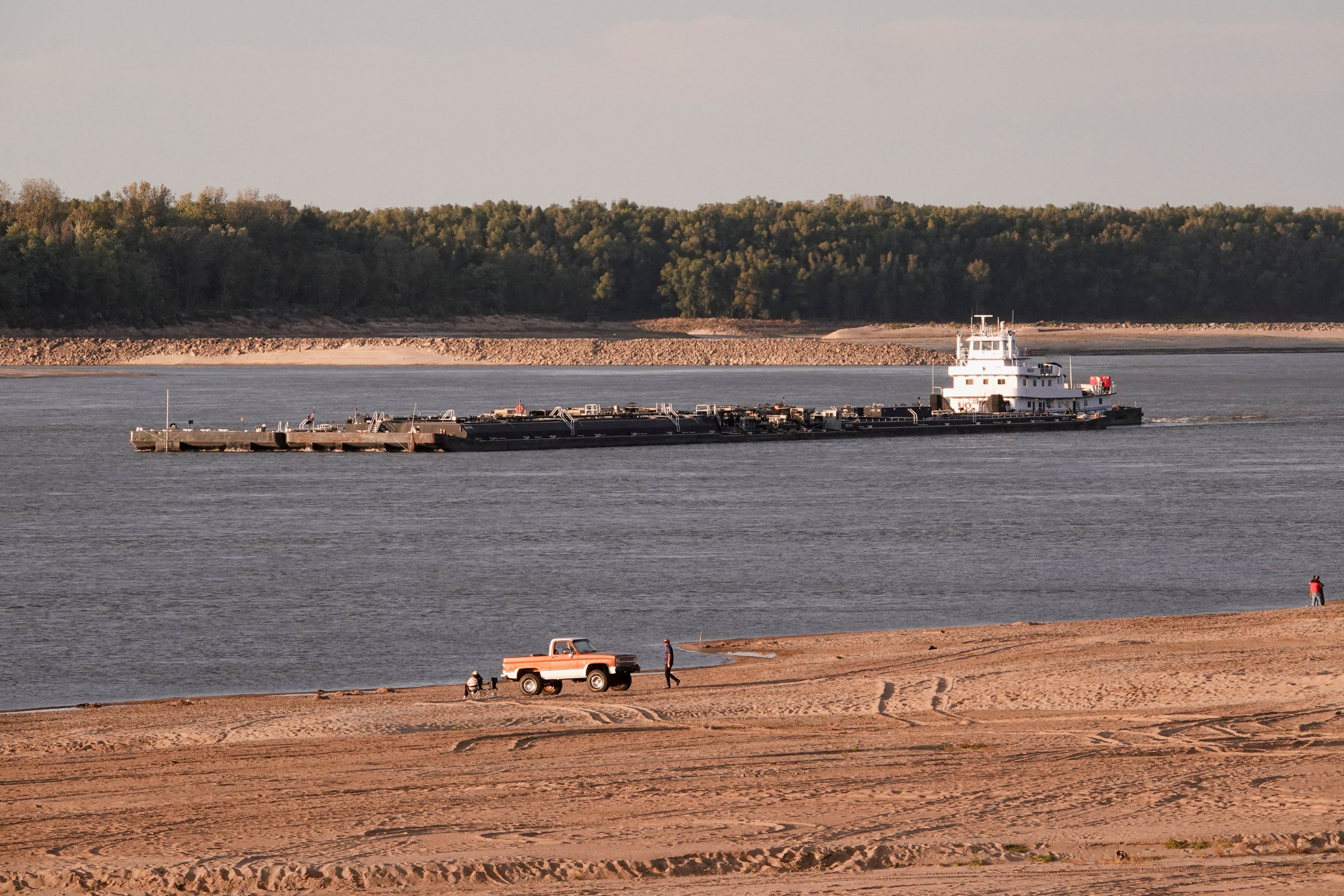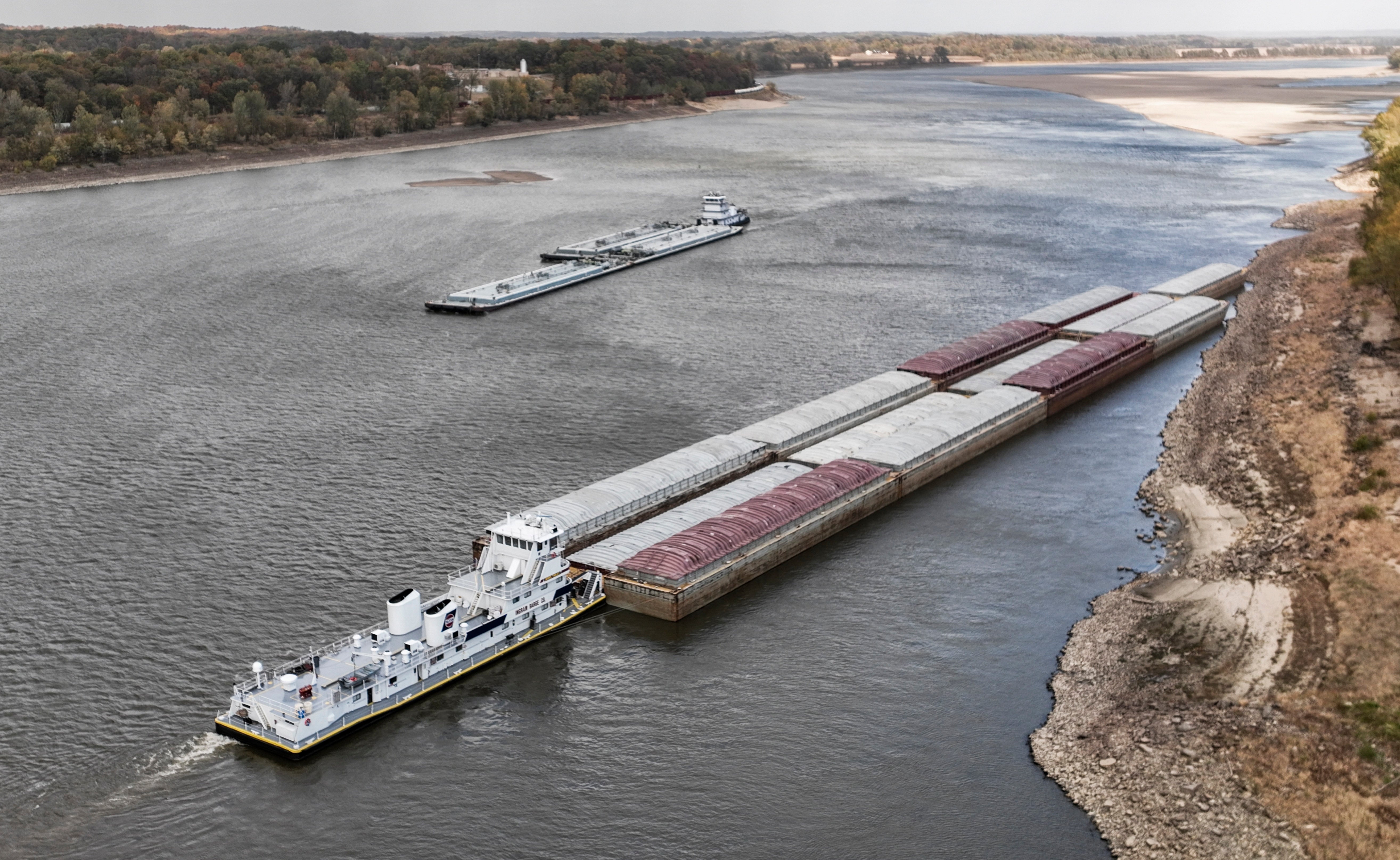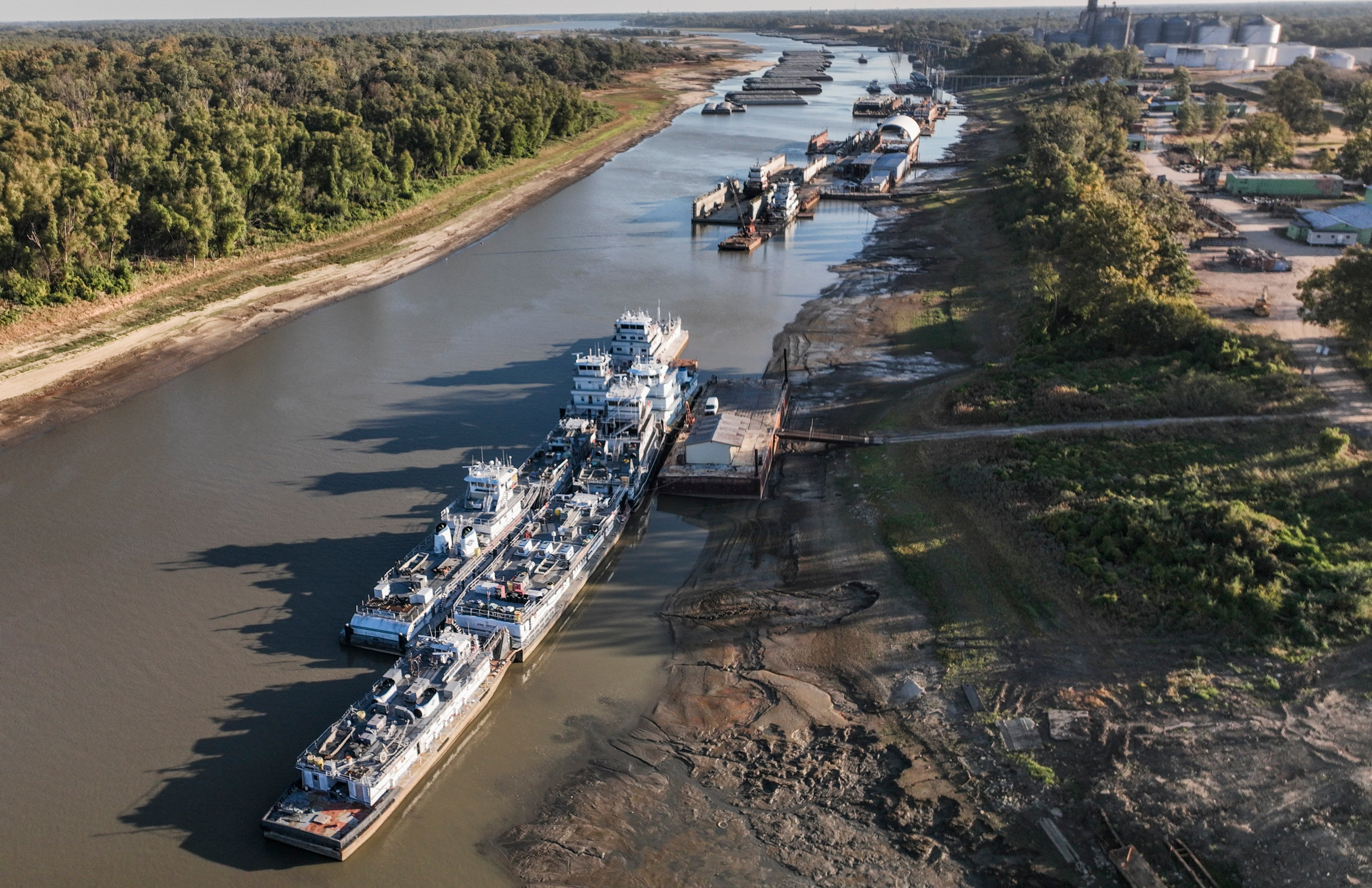1,500 barges stuck in vital Mississippi River shipping lanes as water levels drop precipitously low
Drought has driven water levels to record lows in some spots along the river
Drought has pushed the Mississippi River to extremely low water levels, revealing parts of the riverbed unseen in years.
Barges that run up and down the country’s biggest river carrying goods like food and industrial materials have also been clogged up as boat operators navigate the shrinking waterway and some sections of the river close to traffic.
Waters have reached record-low levels at different stops along the Mississippi, and photos show boats attempting to push through increasingly narrow passages.
Vast areas of the river’s watershed, including its headwaters up north and various tributaries, are experiencing moderate to extreme drought, according to the US government’s drought monitor — the kinds of conditions climate scientists say will become more common as the planet heats up.
The recent drought has pushed water levels to record lows along the Mississippi in parts of Missouri, Arkansas and Tennessee, reports Yale Climate Connections. In Baton Rouge, Louisiana, water levels have dropped low enough to reveal a shipwreck from more than 100 years ago.
In Memphis, Tennessee, one of the country’s most important inland ports, record low water levels blocked barges carrying supplies bound for other parts of the country and the world.
A representative for the US Coast Guard told The Independent that as of Tuesday morning, there were nearly 1,300 northbound barges waiting to pass in Memphis.

Another 239 barges heading both north and south were stopped along the river in Tunica, Mississippi, just south of the border with Tennessee.
Northbound passage was supposed to temporarily reopen in both locations on Tuesday to help clear the queue, the Coast Guard added.
The US Army Corps of Engineers has been dredging problem areas along the Mississippi River to help keep water flowing and ship traffic moving, reports The Wall Street Journal. But the river’s problems may only grow more challenging in the coming months, as the drought is expected to continue.

The National Weather Service (NWS) predicts that dry conditions will persist in much of the river’s upper watershed, including portions of Missouri, Iowa and Minnesota, at least through January.
In addition, drought is likely to develop in parts of Mississippi and Tennessee along the river’s southern end, which is likely to further aggravate water issues. Wetter conditions could develop in parts of the Ohio River valley and Great Lakes region, NWS says.
As a result of the shipping chaos, the cost of transporting some goods along the river has surged in recent months, leaving factories and farms scrambling to find other ways of distributing their products, the Journal reports.

Western North America is in the midst of a years-long “megadrought” that has devastated waterways like the Colorado River. One recent study estimated that the past 20 years have been the driest two decades for at least 1,200 years — and noted that conditions have been made about 42 per cent drier because of the climate crisis.
But as the planet continues to warm, drought will likely become much more common in western and central North America, according to the most recent assessment from the United Nations’ climate science panel — which could put water levels along the Mississippi River in jeopardy more often.
At the same time, the climate crisis will also raise the risk of severe flooding in the river basin as storms grow stronger and dump a lot of rain all at once, reports Climate Nexus.
Join our commenting forum
Join thought-provoking conversations, follow other Independent readers and see their replies
Comments


Bookmark popover
Removed from bookmarks